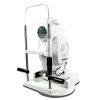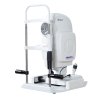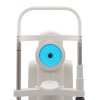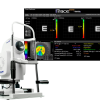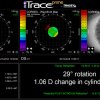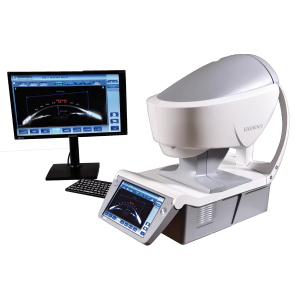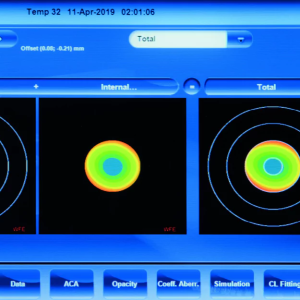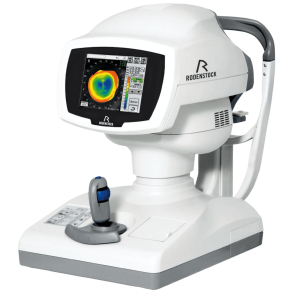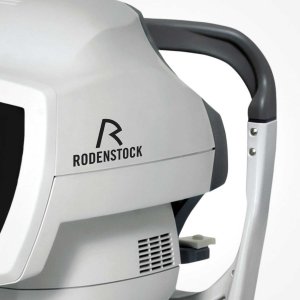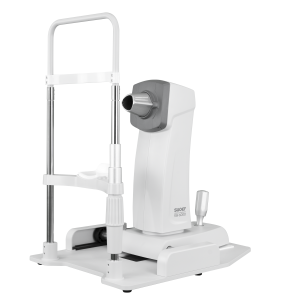Topography Anterior / Posterior
iTrace Wavefront Aberrometer
€1,000.00
The iTrace, is a 5-in-1 device displays the full visual function of a patient’s eye with a simple scan. While the iTrace can certainly be used as a standalone wavefront aberrometer, autorefractor, keratometer, pupillometer, or corneal topographer, leveraging the combined picture of these individual measurements in your office can improve surgical outcomes and patient satisfaction.
The iTrace is a single piece of ophthalmic diagnostic equipment that performs both wavefront aberrometry and corneal topography with a simple, quick set of scans. After capturing these two distinct measurements with ray tracing and Placido disk technology, the iTrace performs a complete analysis and generates a literal picture of a patient’s visual function in milliseconds.
Product Features
- Understand the source of the aberrations to diagnose Dysfunctional Lens Syndrome and determine candidacy for premium IOL options
- Toric Check
- Improve precision in Toric IOL surgery with the iTrace Toric Planner
- iTrace Prime — broadens the impact the device can make for the modern practitioner on their ability to produce the best possible outcomes for their patients
- Know if a patient’s optical system will align with a multi-focal before you do surgery

- Measurement range: +/- 15 D sphere +/- 10 D cylinder
- Pupil scan size: 2.5 mm to 8.0 mm diameter
- Accuracy: +/- 0.10 D
- Reproducibility: +/- 0.10 D
- Footprint Dimensions: 13.0 in (33.0 cm) x 17.0 in (43.2 cm)
iTrace Wavefront Aberrometer benefits
- Identify and map higher and lower order aberrations throughout the anterior segment.
- Assess progression of corneal and lens dysfunction.
- Understand exactly how these errors affect your patients’ visual performance.
- Track the exact source of any vision issues.
- Objectively quantify vision loss over time and helps patients understand their eyesight.
- Precise calculation of higher and lower order aberrations.
Search
Categories
- A-B SCAN PACHYMETRY
- AESTHETICS
- ANTERIOR SEGMENT ANALYZER
- APPLANATION TONOMETER
- Auto Lensmeter
- AUTO REF - K TOPOGRAPHER
- AUTO REF - KERATOMETER
- BIO ENGINEERED CORNEA TRANSPLANT
- CHARTS - MONITORS
- CORNEAL TOPOGRAPHY
- Crosslinking
- CRΟSSLINKING - PHOTO REFRACTIVE
- DIAGNOSTIC LENSES
- DRILL UNITS
- Electrophysiology
- ELECTRORETINOGRAPHY ERG - VEP
- FRAME WARMER
- FUNDUS CAMERAS NON-MYDRIATIC
- HAND EDGER
- HAND HELD TONOMETER
- IOLS - CONSUMABLES
- LASER YAG - SLT - ARGON - DIODE
- Lasers Therapeutic
- LENSEMETER
- Multifunction Units
- NON CONTACT TONOMETER
- OCT
- OPHTHALMIC UNITS - CHAIRS - TABLES
- OPHTHALMOLOGY
- OPHTHALMOSCOPE
- OPTICAL BIOMETER
- Optician
- OPTOMETRY
- ORTHOPEDICS
- PATIENT DATA SOFTWARE
- PERIMETER
- PERIMETRY
- PHOROPTER AUTO
- PHOROPTER MANUAL
- Refractive Suite & Femto
- RETINALYZE SCREENING SOFTWARE
- RETINOSCOPE
- SLIT LAMPS DESK TOP
- SLIT LAMPS MOBILE
- SPECULAR MICROSCOPE
- SURGICAL MICROSCOPES
- SURGICAL ROOM
- SURGICAL TABLES AND CHAIRS
- TELEOPHTHALMOLOGY
- Tonometry
- Topography Anterior / Posterior
- TRABECULAR MICRO BY-PASS
- TRIAL CASE - FRAME
- Uncategorized
- VISION SCREENER
- VISION TESTS
Manufacturers
Brands
- Altris AI
- Appasamy Associates
- Appsmart
- ARC Laser
- Avedro
- Eyeφos
- Frastema
- Glaukos
- Heine
- i-Optik
- IC Today
- Inami
- Ithaka
- Labomed
- Mabel
- Main Meditech
- MedevPlus
- Medinstrus
- MicroClear Tech
- Mocular Medical
- Moptim
- Omni
- Opticlear XL
- Opto Coheren
- Opto Engineering
- Opto Hellas
- OptoSystems
- OVision
- Reichert
- Rodenstock
- Shin Nippon
- Sincoheren
- SK Med
- Suoer
- Supore
- Syseye
- Takubomatic
- TowardPi
- Tracey Technologies
- UFSK
- ViewM
- Visionix
- Volk
- WelchAllyn
- WRMT


